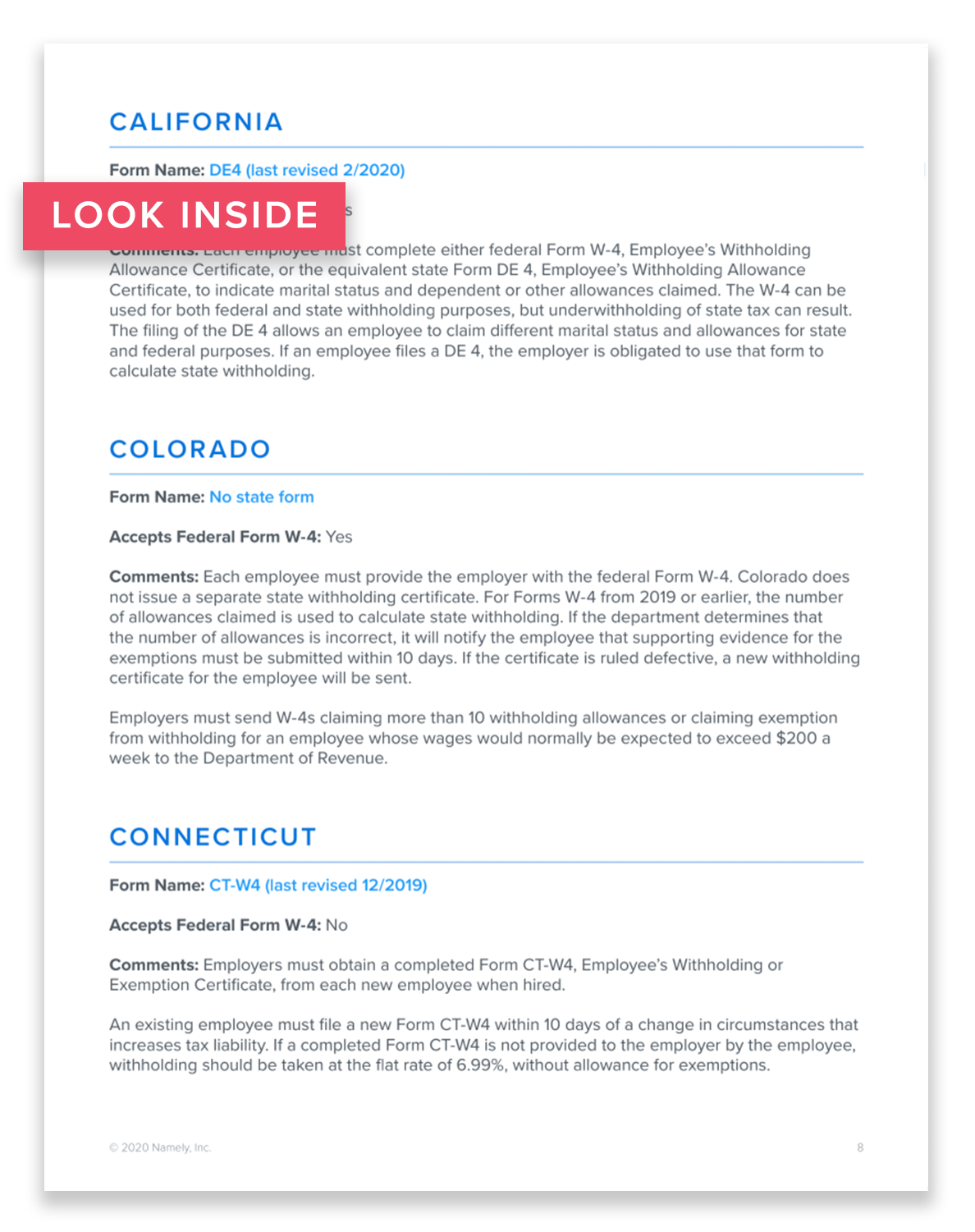infographic

Your Guide to 2020 State Withholding Forms
See how much you should be withholding from every employees’ paycheck.
OVERVIEW
Everything you need to build a better workplace.
-
MODERN HR
The only HR platform used by everyone, every day
-
BENEFITS
Affordable plans from the nation’s top carriers
-
PAYROLL
Tax filings, W-2s, benefits deductions, and more
-
TALENT
Easy onboarding, goals, and performance reviews
-
TIME
Physical time clocks & intuitive software
-
MANAGED SERVICES
Extra support for day-to-day HR administration
When you look at your paystub, you might notice a certain amount of your wages are withheld for state and federal taxes. Employers are required to withhold and pay income tax on wages, salaries, bonuses, commissions, and other similar income earned by employees.
But what’s the difference between state and federal taxes? State withholding is based on state taxable wages, and the amount that has to be withheld varies by state. Federal withholding is similar in that it’s based on federal taxable wages, but the amount that must be withheld is constant across all states. When you file your personal income taxes both federal and state governments assess your tax liability based on wages earned and other income-producing activity to determine liability. If you overcontribute to tax withholding, you will receive the additional funds at the end of the year in the form of a tax refund. However, if you under contribute throughout the year, you will own owe taxes to the IRS. An employee’s wages and any amounts withheld are reported on the Form W-2, Wage and Tax Statement, that employers must furnish to employees by January 31.
So, how do the government and employers know how much to withhold from every employees’ paycheck? Find out in this eBook, Your Guide to 2020 State Withholding Forms.
Looking for more ways to stay compliant? Check out Namely’s new product offering, Comply Advice & Action!